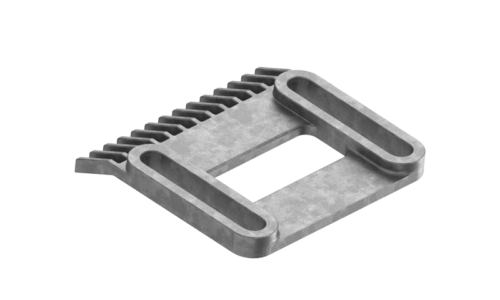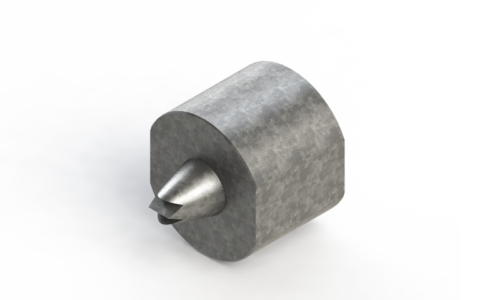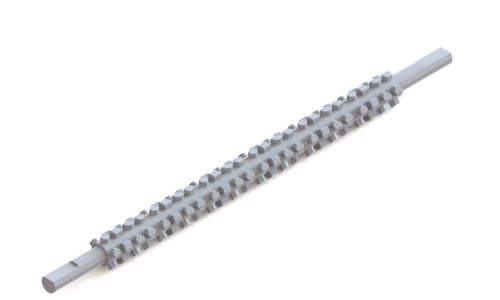At NBS, our main focus is on Innovative Ways for our clients, so they can achieve their target(s) with ease and before deadline. We have the team of professionals with more than ongoing 10 years + of experience in the Mechanical Engineering Industry as well as related RnD work.

Services







NBS provides services in;
Product design and development is the process of creating and bringing new products to market. It involves a series of steps, including ideation, concept development, prototyping, testing, and commercialization.
The process of product design and development can involve multiple stakeholders, including designers, engineers, marketers, and business leaders. Collaboration and effective communication are key to ensuring that the final product meets the desired specifications and is launched successfully.
Successful product design and development requires a balance of creativity and practicality, as well as a focus on meeting user needs and solving real-world problems. By following a structured and iterative process, companies can develop products that are both commercially successful and socially impactful.
A feasibility report is a document that evaluates the potential of a project or business idea. It typically includes an analysis of the technical & financial aspects of the proposed project, and assesses whether it is viable and achievable.
The purpose of a feasibility report is to provide decision-makers with the information they need to determine whether to proceed with the project or not. It helps to identify potential risks, opportunities, and challenges, and provides recommendations for mitigating these factors.
In 3D assembly modeling, designers create a digital representation of multiple parts that fit together to form a complete product. This allows designers to test the fit, form, and function of the product before physically assembling it.
3D part and assembly modeling has become an essential tool for product design and development, as it allows designers to create and test products more quickly and accurately than traditional prototyping methods. It also enables collaboration and communication between designers, engineers, and other stakeholders, improving the overall efficiency and quality of the design process.
3D printing has revolutionized the way products are designed and manufactured, as it allows for the rapid creation of complex geometries that would be difficult or impossible to produce using traditional manufacturing methods. It also reduces waste and costs by allowing for more efficient use of materials and resources.
3D printing has a wide range of applications in various industries, such as aerospace, automotive, healthcare, and consumer products. It can be used for prototyping, small-scale production, and even custom manufacturing of individual products.
Stress analysis of mechanical parts is the process of analyzing the internal stresses and deformations that occur in a part when subjected to external loads or forces. This analysis is critical to ensure that the part is strong enough to withstand the expected loads without deforming or failing.
The stress analysis process involves several steps, including modeling the part using specialized software, applying the appropriate loads and boundary conditions, and analyzing the resulting stresses and deformations.
Designing of jigs and fixtures is the process of creating specialized tools that are used to hold and guide work pieces during manufacturing operations. Jigs and fixtures are designed to ensure that the work pieces are held securely and accurately, and that the manufacturing process is repeatable and efficient.
The design of jigs and fixtures involves several factors, including the shape and size of the work piece, the required accuracy and precision, the manufacturing process, and the available equipment and materials. Jigs and fixtures can be designed using computer-aided design (CAD) software(s) such as AutoCAD and SolidWorks, which allows for precise modeling and simulation of the manufacturing process.
Tool design and development is the process of creating specialized tools that are used in manufacturing processes to produce high-quality products efficiently and cost-effectively. The design of tools involves several factors, including the type of manufacturing process, the materials being used, the required precision and accuracy, and the available equipment and resources.
The development of tools typically involves several stages, including conceptual design, detailed engineering design, prototyping, and testing. Tool designers use specialized software and equipment to create precise models and simulations of the tools, allowing for testing and refinement before production.
The design and development of steel sheds involves creating customized structures that are strong, durable, and functional. Steel sheds can be used for a variety of purposes, including storage, workspace, or shelter for animals or equipment.
The design process typically involves working closely with the client to understand their specific needs and requirements, as well as the intended use of the structure. Factors such as size, shape, and the type of materials used are all taken into consideration during the design process.
Once the design is finalized, the development process involves fabricating and constructing the steel shed. This typically involves using advanced cutting, welding, and fabrication techniques to create the various components of the shed, which are then assembled on site.
Steel sheds offer a number of advantages over traditional construction materials, including their strength, durability, and resistance to weather and other environmental factors. They are also highly customizable and can be designed to meet a wide range of needs and specifications.
Overall, the design and development of steel sheds requires a high degree of technical expertise, as well as collaboration with the client to ensure that the final product meets their specific needs and requirements.
Designing and development of injection molding dies is the process of creating specialized tools that are used to produce high-quality plastic parts in large quantities. The design of injection molding dies involves several factors, including the shape and size of the part, the material being used, the required precision and accuracy, and the available equipment and resources.
The development of injection molding dies typically involves several stages, including conceptual design, detailed engineering design, prototyping, and testing. Die designers use specialized software and equipment to create precise models and simulations of the dies, allowing for testing and refinement before production.
Designing and development of blow shells is the process of creating specialized tools that are used in blow molding processes to produce high-quality plastic products such as bottles, containers, and other hollow shapes. The design of blow shells involves several factors, including the shape and size of the product, the material being used, the required precision and accuracy, and the available equipment and resources.
The development of blow shells typically involves several stages, including conceptual design, detailed engineering design, prototyping, and testing. Designers use specialized software and equipment to create precise models and simulations of the shells, allowing for testing and refinement before production.
2D part and assembly drawings are a type of technical drawing used in manufacturing and engineering to communicate detailed information about the design, dimensions, and tolerances of individual parts and assemblies.
2D part drawings typically include detailed views of each part, including cross-sections and dimensions, while assembly drawings show how individual parts fit together to create a final product.
These drawings are usually created using computer-aided design (CAD) software and provide a detailed visual representation of the product, allowing engineers and manufacturers to identify potential issues and make necessary adjustments before production.
2D part and assembly drawings are also used to communicate design specifications and manufacturing requirements to suppliers and production teams, ensuring that the product is produced to the required standards and specifications. Overall, 2D part and assembly drawings are an important tool for ensuring the quality, accuracy, and consistency of manufactured products.
Operation sheets and quality plans are essential documents used in manufacturing to ensure that products are produced to the required standards and specifications.
Operation sheets provide detailed instructions for each step of the manufacturing process, including the required equipment, materials, and procedures. These sheets help to ensure that each step of the process is carried out consistently and accurately, minimizing the risk of errors and defects.
Quality plans, on the other hand, are used to define the specific quality control measures that will be used throughout the manufacturing process. This includes inspection and testing procedures, as well as criteria for acceptable levels of quality.
Together, operation sheets and quality plans help to ensure that products are produced to the required standards and specifications and that any defects or issues are identified and addressed promptly. By documenting the manufacturing process and quality control measures, these documents also provide a valuable tool for continuous improvement and refinement of the manufacturing process over time.
Tool layouts and flow charts are essential tools used in manufacturing to improve efficiency, reduce waste, and ensure consistent quality.
Tool layouts are used to design and organize the placement of tools and equipment within a manufacturing facility, optimizing workflow and reducing the time required to complete each step of the process. This includes the placement of machines, workstations, and tool storage areas, as well as the layout of raw material and finished product storage areas.
Flow charts, on the other hand, are used to map out the steps of the manufacturing process, from the initial raw materials to the final product. This includes identifying the various tasks and processes involved, as well as the personnel and equipment required at each stage. Flow charts help to identify potential bottlenecks and areas where efficiency can be improved, allowing for continuous refinement of the manufacturing process over time.
Together, tool layouts and flow charts help to ensure that manufacturing processes are optimized for efficiency and quality, while also reducing waste and maximizing the use of resources. By documenting the manufacturing process and identifying areas for improvement, these tools provide a valuable resource for continuous improvement and refinement of the manufacturing process over time.
A Bill of Material (BOM) is a comprehensive list of all the components, sub-assemblies, and raw materials that are required to manufacture a product. The BOM includes information such as part names, part numbers, quantities required, and the order in which the components are assembled.
BOMs are used in manufacturing to ensure that all required components are available when needed, and to help manage inventory levels and costs. BOMs also help to ensure that products are produced consistently and accurately, and that any changes or modifications to the product design are reflected in the manufacturing process.
BOMs can be created manually or generated automatically using computer-aided design (CAD) software or other manufacturing software tools. They are an important tool for manufacturers to ensure that products are produced efficiently, cost-effectively, and to the required standards and specifications.
Cycle time calculation is an essential process in manufacturing that involves determining the total time required to complete a single cycle of a manufacturing process. This includes the time required to complete each step of the process, from the start of one cycle to the start of the next.
Cycle time calculation is important because it helps manufacturers to identify potential bottlenecks or areas where efficiency can be improved. By understanding the total time required to complete a cycle, manufacturers can look for ways to optimize each step of the process and reduce overall cycle time.
Cycle time can be calculated using a variety of methods, including time studies, simulation software, and other manufacturing tools. The results of the cycle time calculation can then be used to identify opportunities for process improvement, such as redesigning workstations, streamlining workflows, or improving equipment performance.
Overall, cycle time calculation is an important tool for manufacturers to improve efficiency, reduce waste, and optimize their manufacturing processes. By identifying areas for improvement, manufacturers can ensure that products are produced more quickly, cost-effectively, and to the required standards and specifications.
A Request for Quotation (RFQ) is a formal document used by businesses to solicit quotes or proposals from potential suppliers or vendors. An RFQ typically includes a detailed description of the products or services required, along with specifications, quantities, and any other relevant details.
The purpose of an RFQ is to gather information from suppliers or vendors so that the business can make an informed decision about which supplier or vendor to select. The RFQ process allows businesses to compare prices, quality, and other factors from multiple suppliers or vendors, helping them to make the best possible choice.
The RFQ process typically involves a number of steps, including drafting and sending the RFQ, receiving and reviewing quotes or proposals, and selecting a supplier or vendor. The RFQ process is often used for large or complex purchases, or for purchases that require a high degree of customization or expertise.
Overall, the RFQ process is an important tool for businesses to ensure that they are selecting the best possible suppliers or vendors for their needs, while also ensuring that they are obtaining the best possible value for their money.



3D Printed Display Models
We Provide a wide range of 3D model services.

Contact Us
Have any questions or ideas?
Address:
Building 150-A Chowk New Shadbagh,
Sher Shah Road, Lahore. 54900
Email: info@nbs.com.pk
Phone: +92 (0)327 0816977



